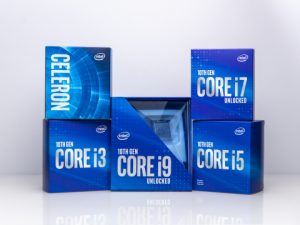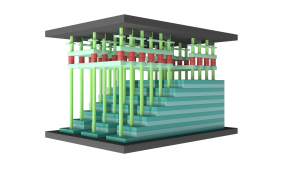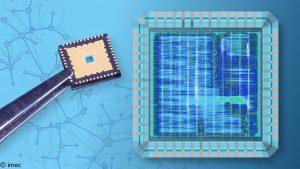This week, EDACafe catches up on some of the news from the last thirty days – after four weekly articles devoted to specific topics: in particular, make sure to check out our special report on high-speed PCB design featuring interviews with Wade Smith (Ansys), Stephen Slater (Keysight), and Yuriy Shlepnev (Simberian). Let’s now move to some news, starting with an update on the upcoming Design Automation Conference: this year’s DAC will be held as a virtual event, scheduled for July 19 to 23.
Startups get zero-cost Arm IP
Early-stage silicon startups with up to $5m in funding can now take advantage of Arm’s “Flexible Access for Startups” program, granting them zero-cost access to IP from the Arm Cortex-A, -R and -M processor families, select Arm Mali GPUs, ISPs, and other foundational SoC building blocks. Startups will also be able to access Arm’s ecosystem of silicon designers, software developers, support, training and tools. Arm also announced a strategic partnership with Silicon Catalyst, an incubator focused exclusively on helping startups accelerate silicon solutions.
Arm-powered Macs?
Definitely not a startup, Apple also could be using more Arm IP in the future. The Cupertino giant is reportedly planning to start selling Mac computers with its own main processors by next year, relying on designs that helped popularize the iPhone and iPad. The future Arm-based Mac chips – which would replace the current Intel processors – will be reportedly manufactured by TSMC in a 5-nanometer process. Macs will still run the macOS operating system, rather than the iOS.
New Intel and AMD processors
And speaking of Intel, the recently announced 10th Gen Core S-series desktop processor family includes what the company claims to be “the world’s fastest gaming processor”. Dubbed Core i9-10900K, the chip can reach up to a maximum of 5.3 GHz thanks to Thermal Velocity Boost, a feature that opportunistically and automatically increases clock frequency based on how much the processor is operating below its maximum temperature. It also offers per-core hyperthreading control, allowing experienced “overclockers” to decide which threads to turn on or off on a per-core basis. Rival AMD, for its part, has announced global availability of “the world’s first x86 7nm commercial notebook processors,” the AMD Ryzen PRO 4000 Series Mobile family. The new series includes AMD Ryzen 7 PRO 4750U, that the company claims to be “the fastest business processor for ultra-thin business notebooks,” with up to 8 cores and 16 threads.
Chinese “disruptive” flash memory chip
TechInsights, a Canadian reverse engineering firm, has recently analyzed the 64L 3D Xtacking NAND devices manufactured by Yangtze Memory Technologies Co. (YMTC), China’s first mass producer of 3D NAND flash memory chips. According to TechInsights, “There is no question that this will disrupt the 52 billion dollar NAND memory market and its respective market leaders.” Due to the Xtacking architecture in which periphery circuits and memory cell operations are processed on a separate wafer, the array efficiency and memory bit density of the YMTC device are considerably higher than conventional 3D NAND. TechInsights confirmed that YMTC’s Xtacking architecture uses two different dies for logic and memory array and employs some unique and very innovative technologies. According to TechInsights, this 64L 3D NAND flash device represents the first major competitive semiconductor product to come out of China’s state-backed investment in cutting-edge memory chips, part of the “Made in China 2025” initiative unveiled three years ago.
More RF spectrum for Wi-Fi 6
The FCC (US Federal Communications Commission) has made 1,200 megahertz of spectrum in the 6 GHz band (5.925–7.125 GHz) available for unlicensed use. According to FCC, these new rules will usher in Wi-Fi 6, the next generation of Wi-Fi, and play a major role in the growth of the Internet of Things.
Neuromorhpic chip improves drone radar performance
Belgian research institute Imec has presented the world’s first chip that processes radar signals using a spiking recurrent neural network (SNN). According to Imec, the neuromorphic device consumes 100 times less power than traditional implementations while featuring a tenfold reduction in latency. Its first use-case will be a low-power, anti-collision radar system for drones that can react much more effectively to approaching objects.
Smartphones get advanced video technologies
A quick look at some recent announcements confirms the current role of smartphones as advanced video platforms. OmniVision has announced the OV64B, a 64-megapixel image sensor with a 0.7 micron pixel size, enabling 64 MP resolution in a 1/2″ optical format for the first time. This allows high-end and high mainstream smartphone designers to create the thinnest possible phones with high resolution 64 MP cameras. This sensor provides 4K video recordings with electronic image stabilization, as well as 8K video at 30 frames per second. MediaTek will enable YouTube video streams using the cutting-edge AV1 video codec on the MediaTek Dimensity 1000 smartphone SoC. And the fifth generation Pixelworks visual processor enables some OnePlus smartphone models to offer features such as upconversion of video dynamic range from standard (SDR) to high (HDR), automatic adaptation of the color tone of the display to match the color temperature of the ambient light, true-to-life skin tones, etc.
Acquisitions
Nvidia has recently completed its acquisition of Mellanox for a transaction value of $7 billion. The deal obviously targets datacenters and high-performance computing. Intel has acquired Moovit, an Israel-based company offering Mobility-as-a-Service (MaaS) solutions. Upon close, Moovit will join Mobileye, the ADAS company that Intel acquired in 2017. Moovit combines information from public transit operators and authorities with live information from the user community to offer travelers a real-time picture of the best route for their journey. MaxLinear – a provider of ICs for the connected home, wired and wireless infrastructure – has entered into a definitive agreement to acquire Intel’s Home Gateway Platform Division, which comprises Wi-Fi access points, Ethernet and home gateway SoC products. New Wave Design and Verification, a provider of high-performance digital electronic interface solutions for the defense/aerospace market, has acquired FlightWire Technology, a provider of 1394b AS5643 (MIL-1394) solutions.










